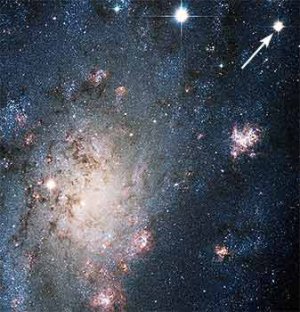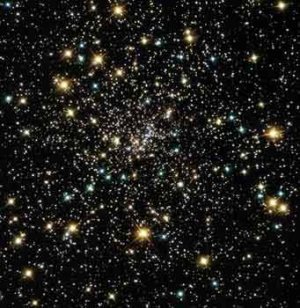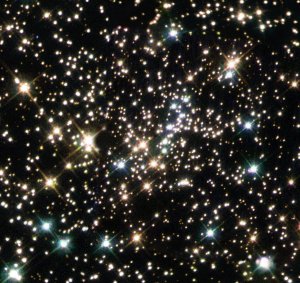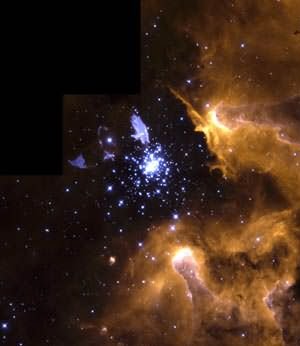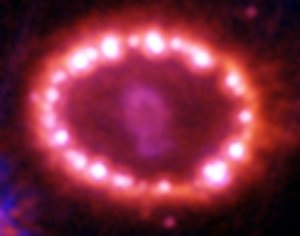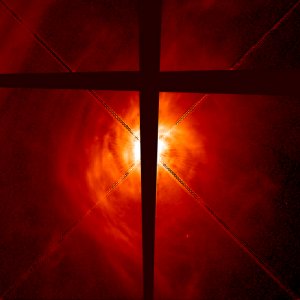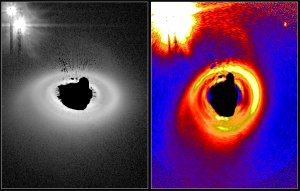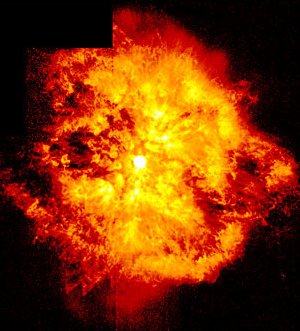Supernova SN 2004dj, on the outskirts of NGC 2403, a galaxy located 11 million light years from earth. Credit: NASN, ESA, A. Fillipenko (Univ California, Berkeley)
High star density in globular cluster NGC 6397. Credit: NASA, Hubble Heritage Team (STScI/ AURA)
Supersonic shock waves from a supernova explosion SN 1987A) heating a pre-existing gas ring. Credit: NASA, P. Challis, R. Kirshner, B. Sugerman
Dust disk around a young star (HD 141569A), believed to be the birthplace of planets. Credit: NASA, J. Bachall, A. Martell, H. Ford, M. Clampin, G. Hartig, G. Illingworth, ACS Science Team, ESA
Swirling disk of dust and gas surrounding the developing star, AB Aurigae. Credit: C.A. Grady (National Optical Astronomy Observatories, NASA Goddard Space Flight Center), B. Woodgate (NASA Goddard Space Flight Center), F. Bruhweiler and A. Boggess (Catholic University of America), P. Plait and D. Lindler (ACC, Inc., Goddard Space Flight Center), M. Clampin (Space Telescope Science Institute), and NASA
Galactic nebula NGC 3603, showing entire life cycle of stars, starting with the Bok globules and giant gaseous pillars (evidence of embryonic stars), followed by circumstellar disks around young stars, and progressing to aging, massive stars in a young starburst cluster. The blue super-giant with its ring and bipolar outflow marks the end of the life cycle. Credit: Wolfgang Brandner (JPL/IPAC), Eva K. Grebel (Univ. Washington), You-Hua Chu (Univ. Illinois Urbana-Champaign), and NASA
The energetic star WR124, surrounded by hot clumps of gas being ejected into space at speeds of over 100, 000 miles per hour. Credit: Yves Grosdidier (University of Montreal and Observatoire de Strasbourg), Anthony Moffat (Universitie de Montreal), Gilles Joncas(Universite Laval), Agnes Acker (Observatoire de Strasbourg), and NASA




